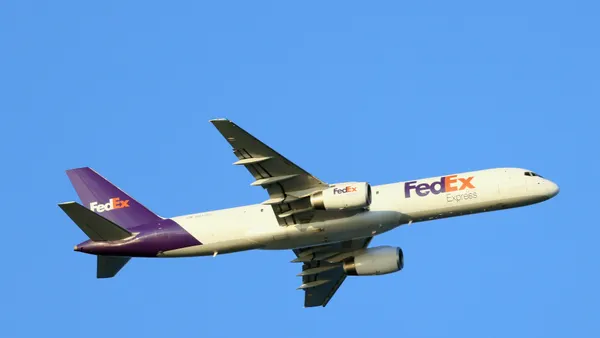Dive Brief:
- Air freight demand, measured in freight ton kilometers (FTKs), grew 2% YoY in September, well below the five-year average growth rate of 5.1%, according to the International Air Transport Association (IATA).
- The association attributes slowing growth to a softening of demand drivers, including manufacturing exports and longer supplier delivery times.
- Air freight capacity, measured in available freight ton kilometers, grew at a rate of 3.2% YoY, outpacing demand growth for the seventh consecutive month.
Dive Insight:
External factors play a key role in pushing demand for freight services either up or down, and in the case of air cargo, many of those factors are not pushing as hard toward demand in September.
Manufacturing firms around the world have seen a decline in export orders. And for the first time since June 2016, the Purchasing Mangers' Index (PMI) for global manufacturing "fell into contractionary territory," IATA said in its analysis. In fact, all major economies saw a contraction in export books, with the U.S. being the exception.
Adding to that, manufacturers in Asia and Europe are reporting longer supplier delivery times, indicating they're likely turning to slower but more cost-effective freight modes.
"Longer delivery times are undercutting the need for air freight in many traditional markets," Alexandre de Juniac, IATA's Director General and CEO, said in a press release.
While these factors contribute to weak growth, other factors, including consumer confidence and expanding international e-commerce, are keeping the market afloat, ensuring growth of air cargo demand stays in the black.














